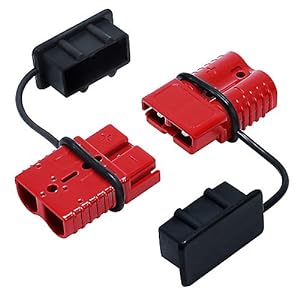Dumb question from a Noob. When working on electrical do you disconnect the positive or negative battery terminal? I just installed a disconnect to the positive side because it was easier to get to and I didn't /don't think it really matters. But, a "friend" said it was a bad move. So, what do the experts say?
You are using an out of date browser. It may not display this or other websites correctly.
You should upgrade or use an alternative browser.
You should upgrade or use an alternative browser.
Positive or Negative?
- Thread starter Frederick
- Start date
Charles Young
C Young
- Joined
- Sep 25, 2012
Hmmm, seems there is still a ?
I was always under the impression that you want to remove the positive so as to not short something out accidentally. By removing the ground that circuit has power as soon as its grounded. Whereas the positive, when off, has no power to the circuit when you accidentally ground something. Less chance of blowing stuff.
If you are talking about removing the battery cables from the battery you want to disconnect the negative first and connect it last. That way if your wrench hits any metal while it is touching the battery terminal there is no problem. If the wrench is on the negative terminal and hits metal no current will flow because the metal is already grounded, connected to the negative terminal by the cable, and it is at the same voltage. If the negative cable is still attached and you put a wrench on the positive terminal and let it also hit any metal you will get sparks. Once the negative cable is disconnected it doesn't matter if you short the positive terminal to any metal (anything but the battery negative terminal) because there is no longer a complete circuit so no current flow. That's for cables, such as when replacing a battery. If you are permanently installing a disconnect switch by inserting it in either the positive or negative cable you shouldn't have the possibility of an accidental short from tools, and as a matter of fact the NHRA requires a battery master cutoff switch to be wired to the positive side of the battery.
novaderrik
Well-Known Member
- Joined
- May 12, 2004
I was always under the impression that you want to remove the positive so as to not short something out accidentally. By removing the ground that circuit has power as soon as its grounded. Whereas the positive, when off, has no power to the circuit when you accidentally ground something. Less chance of blowing stuff.
electricity moves at the speed of light... it doesn't care which terminal you unhook first..
and besides, i believe that it "flows" from negative to positive so your logic is backwards...
i always try to remove the negative cable first, if only for the aspect of accidentally hitting anything metal with the wrench while unhooking it.. once the negative is off, you can jump the positive straight to the body and nothing will happen. if you've ever tried to tighten a battery cable on a starter without first unhooking the battery (like i did when i was young, burnt a hole in a header tube on my Monte Carlo) you will understand this..
Thiselectricity moves at the speed of light... it doesn't care which terminal you unhook first..
and besides, i believe that it "flows" from negative to positive so your logic is backwards...
i always try to remove the negative cable first, if only for the aspect of accidentally hitting anything metal with the wrench while unhooking it.. once the negative is off, you can jump the positive straight to the body and nothing will happen. if you've ever tried to tighten a battery cable on a starter without first unhooking the battery (like i did when i was young, burnt a hole in a header tube on my Monte Carlo) you will understand this..
BPE2013@hotmail.com
TurboTnZ06
Go on red!
- Joined
- May 7, 2002
I undo negative first, then positive. Reverse going on, positive first, then negative.
I like it! Maybe just cut the cables with an axe?Take the whole battery out and call it a day.
novaderrik
Well-Known Member
- Joined
- May 12, 2004
Take the whole battery out and call it a day.
wire it in with a plug like this:

and a couple of wing nuts on the hold down... works for the NASCAR boys..
I like it! Maybe just cut the cables with an axe?
No axes are to be used on an american classic... my comment wasn't intended to be taken as a smart ass remark but its always better to play it safe so removing the battery eliminates the risk.
Similar threads
- Replies
- 4
- Views
- 836
- Replies
- 0
- Views
- 432
- Replies
- 12
- Views
- 1K
